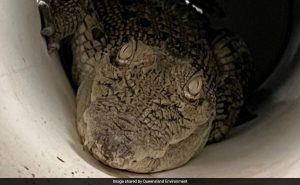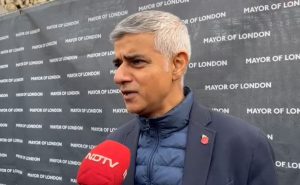Sydney:
The task was daunting: find a tiny radioactive capsule that had fallen off a truck somewhere in Western Australia’s vast outback sometime in January. It was described by media and officials alike as searching for the proverbial needle in a haystack, but experts involved in the hunt were upbeat about their prospects.
“A lot of people, they would have expected that it would have been an impossible task, but every single person, we were confident in our abilities to find this,” Bronte Sial, an expert in radiological safety, told Reuters in an interview.
Sial who works for the Australian Nuclear Science and Technology Organisation, was part of one of six teams scouring 1,400 km (870 miles) of road between Perth and the state’s remote north for the Caesium-137 capsule – just 6 mm in diameter and 8 mm in length or about the size of a tic-tac sweet.

The cars traveled at a maximum of 70 km/h with sensors dangling out the windows. Radiation detection equipment mounted inside the vehicles, including the Australian-designed CORIS360, scanned the environment. They were searching for Caesium-137’s distinct signature against a backdrop of radioactive chatter, she said.
Western Australia is buzzing with low-level rays thanks to its A$230 billion ($160 billion) mining industry. Nothing to worry about, Sial added with a laugh.
Sial and her colleague played the Stone Temple Pilots, a 90s rock band, softly in the background. Electronic music would have made it hard to hear the equipment, she said.
“It wasn’t too boring and if anything, we love playing with our instruments, they’re fantastic. I can’t get over their ticking sound,” she added.
The saga of the capsule, part of a gauge used at Rio Tinto’s Gudai-Darri iron ore mine – began on Jan. 12 when it left the mine site. Its loss – due to the gauge breaking apart en route – was noticed just under two weeks later in Perth, sparking a huge search that at its peak involved 100 people from at least five government agencies.
A separate team found the capsule on Wednesday morning and it is now in storage at an undisclosed facility in Perth.
Each morning, the teams were handed packed sandwiches and were told by Western Australia’s Department of Fire and Emergency Services where to look. Come evening, they would pull into accommodation booked ahead of time.
Passing trucks, not radiation, were the main danger, said Sial. Road trains – trucks pulling multiple trailers that can stretch the length of two basketball courts – barrel across Western Australia, a sparsely populated state seven times larger than Germany.
Fire trucks escorted the cars and shielded the scientists from traffic when they got out to check the road.
“You do not want people on the road walking around when there’s big trucks around,” she says.
Social media users celebrated the unlikely discovery, with one Twitter user calling the searchers: “Australia Hide and go Seek Champions 2023”.
Sial said their success proved Australian nuclear scientists were able to stand on their own.
“We have been practising for this exact sort of thing. It’s fantastic that we finally could show Australia is more than capable although we don’t have as many reactors.”
The loss or theft of radioactive material happens from time to time in Australia which has 50,000 licensed radiation users.
The Australian Radiation Incident Register reported six incidents of material being found, lost or stolen in 2019. That year, a radioactive gauge was stolen in Queensland state, according to police reports.
(Except for the headline, this story has not been edited and is published from a syndicated feed.)
![]()



